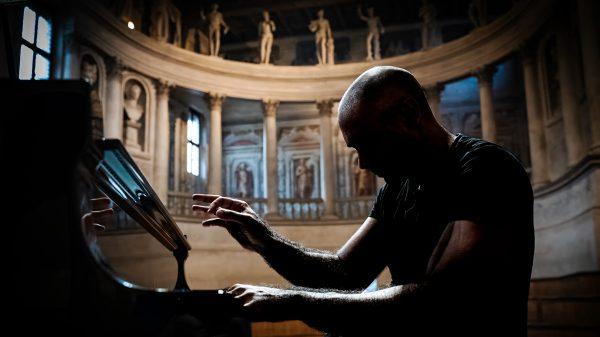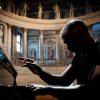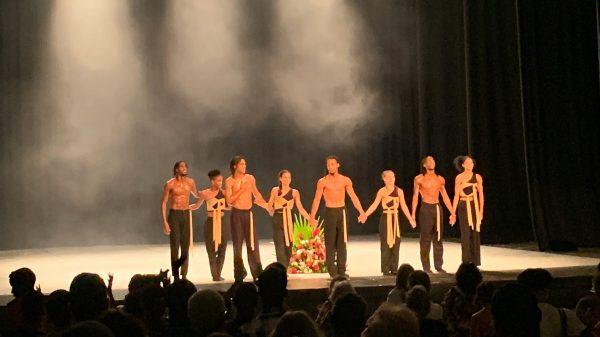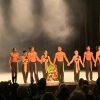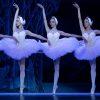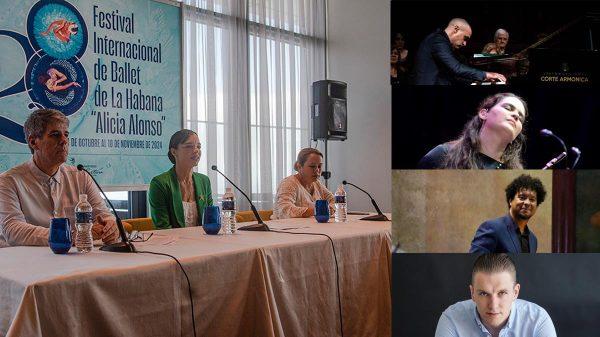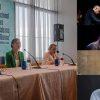Dmitry Sitkovetsky, the great Russian violin master, accompanies us in Havana on the occasion of the IV Edition of the Habana Clásica Festival, directed by Marcos Madrigal, with the Swiss Embassy in Cuba as a leading donor. He came to Cuba after the invitation of Nikolay Shugaev, cellist and Vice Artistic Director of the festival, friend of Marcos Madrigal, its Artistic Director. Sitkovetsky has also come to know Cuba, being the first time he visits us. He brings a couple of pieces to conduct with the Havana Chamber Orchestra and, as the pedagogue he is, to offer master classes for young violin students.
Dmitry Sitkovetsky does not need interpreters, the smoothness of his English conveys the message of poetic coherence, without many gestures, like the excellent speaker he is. The Ignacio Cervantes Hall, of preserved neoclassical elegance, is reserved for a memorable concert. But first, and no less important, the Festival’s Composers in Residence will have a space for the presentation of their works.
The first moments will open the hall for the Italian Maestro Nicola Sani, who gave us his presence during the opening days of the Festival and, unfortunately, had to leave for Italy earlier than expected. But he leaves us his works and, with it, two Cubans: Karla Martínez on piano and Lissy Abreu on violin, accompanied by the prodigious cello of Sonja Kraus, to perform Löico for trio and piano, a work that, like the opening piece, enjoys a very particular contemporaneity. Changes of place, opposing speeds, Karla Martinez to modulate, with her hands, the serious melodies of the inner strings. A complex piece that captures the attention of the public, witness of the Cuban premiere of the work.
Then, Maestro Juan Piñera gives us an almost performative moment, with the extroversion that characterizes him. “33 days ago this work was never thought of”, the Maestro tells us how a composition for four horns and a piano was born, a request by Marcos Madrigal, performed by Karla Martínez, again at the piano, Carles Pérez Esteve, a Spaniard who comes to us from great European orchestras and accompanies three of our Cuban trumpet players: Lía Marina Betancourt, Yanai Suárez Hernández and Debbie Vélez Luis. A minimalist melody that incorporates us in the nostalgia of the Gymnopédies, “98 bars for Satie”, says the Maestro. Accompanied by the commanding voice, building a very theatrical moment where the audience is the protagonist, they have chosen three movements according to the intensity of the applause, world premieres elaborated in just thirty days, a gift for the Habana Clásica.
Intermission
Legend has it that, barely eight days after graduating from the St. Petersburg Conservatory with the performance of his own concerto, the 23-year-old Sergei Prokofiev rushed after hours to sit, chessboard included, in front of Cuban Master José Raúl Capablanca.
“…Capablanca, the crowd favorite… made incredibly fast moves. There were five or six games left… I had no time to think. I was upset, until then I had never lost a simultaneous game… Capablanca is an absolutely irresistible person, lively, handsome, witty, and, this is the point, a genius.”
Perhaps the most audacious way to make his debut with the Cuban public is, precisely, by giving them an anecdote that links common stories. This is how Dmitry Sitkovetsky, a master with white hair and imposing size, introduces himself to us with a story up his sleeve.
He also tells us that Prokofiev is still one of his favorite composers, especially because of similar life stories, both left Russia at a similar age to make their way in the world.
The Maestro’s tribute to this composer has also been included in some of Marcos Madrigal’s recordings. Five melodies for violin and piano and then, Sonata No. 2 which, although originally composed for flute, Prokofiev himself made arrangements for violin at the request of his friend, David Oistrakh, in a very particular way, but that is another story.
The audience did not let them finish easily. Excited by the intense Russian melodies, in a profuse ovation, they got the Maestro to give a last piece, one of the most popular and melodious of the composer: Cinderella and, in contrast to the sweltering heat of the room, Winter Fairy was the variation chosen to end the night.
Undoubtedly, the Habana Clásica Festival gives the city memorable nights that will remain inscribed in our memory and in Cuban musical history.

From our staff writers and editors.







